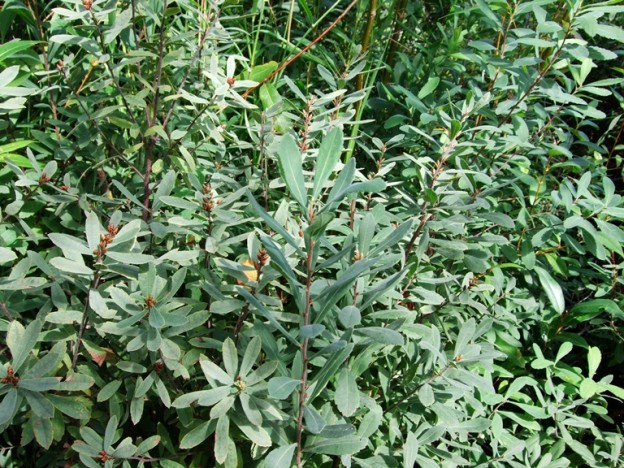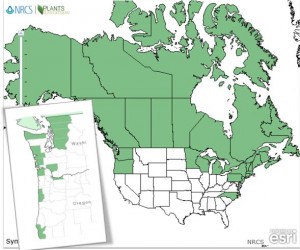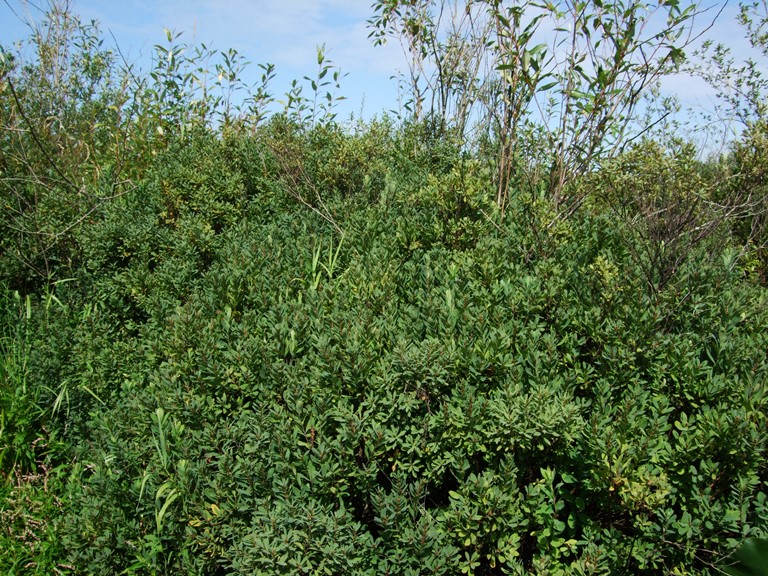Sweet Gale Bayberry Family–Myricaceae
Myrica gale L.
(My-RIH-kuh GAY-lee)
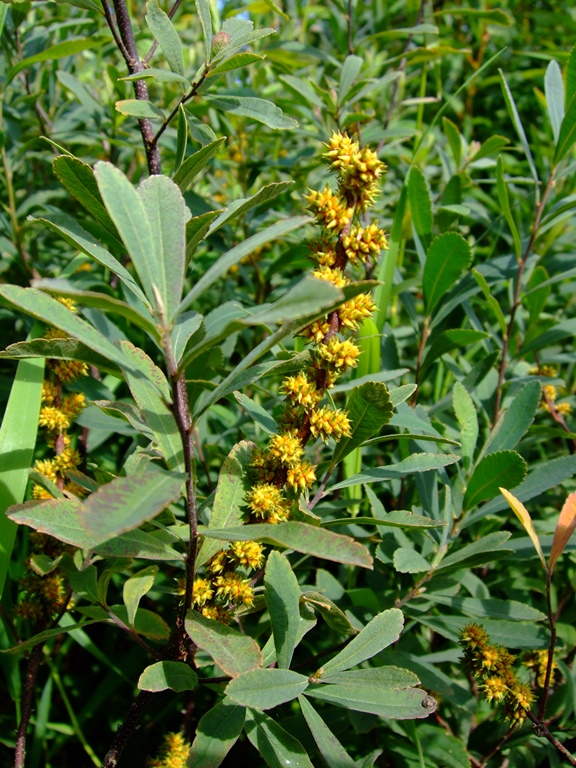 Names: Sweet Gale is also known as Bog Myrtle, or Sweet Bayberry. Myrica is the Greek name for Tamarix. Gale supposedly comes from old English, gagel, or gaggle, perhaps because it is where geese may congregate?
Names: Sweet Gale is also known as Bog Myrtle, or Sweet Bayberry. Myrica is the Greek name for Tamarix. Gale supposedly comes from old English, gagel, or gaggle, perhaps because it is where geese may congregate?
Relationships: Since many species have been moved from Myrica to Morella, very few remain in this genus. The Sierra Bayberry, M. hartwegii, found only in the Sierras of California, is the only other Myrica in the United States.
Distribution: Sweet Gale has a wide distribution and is native to Northern and Western Europe, Canada, and Northern United States, but mostly only grows in bogs west of the Cascades in Washington and coastal Oregon.
Growth: Sweet Gale grows to about 4.5 feet (1.5m).
Habitat: It grows in wetlands, bogs, marshes, lake margins, and can tolerate brackish water in the upper reaches of salt marshes and estuaries. Wetland designation: OBL, Obligate, it almost always occurs in wetlands.
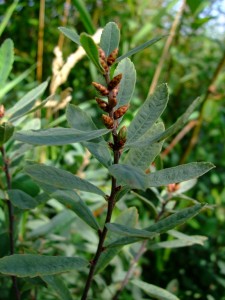 Diagnostic Characters: It’s aromatic, bluish, lance-shaped leaves are dotted above and below with yellow wax glands. Greenish-yellow catkins appear before the leaves; male and female on separate plants. Spikes of clustered “cones” produce tiny winged nutlets.
Diagnostic Characters: It’s aromatic, bluish, lance-shaped leaves are dotted above and below with yellow wax glands. Greenish-yellow catkins appear before the leaves; male and female on separate plants. Spikes of clustered “cones” produce tiny winged nutlets.
In the landscape: Sweet Gale is an important nitrogen-fixing plant in moist, boggy areas; often found growing alongside Douglas Spiraea and Labrador Tea. Its sweet, resinous scent is welcome addition to the garden.
Phenology: Bloom Period: March-April; Fruit ripens in October.
Propagation: Sweet Gale seeds are best sown in autumn as soon as they are ripe. Stored seed should be given a 3-month cold stratification period. Heel cuttings of half-ripe wood can be taken in July/August– or of mature wood in November/December. It can also be propagated by layering or division.
Use by People: The sweet-scented foliage of Sweet Gale is often used as an insect repellant. Its fruit and leaves are used as a flavoring, especially for beer–however, its use for beer has largely been replaced by hops. An essential oil derived from the fruits is used in perfumes and soaps, purportedly good for sensitive skin and acne. A tea made from the leaves is also supposed to aid in dream recall and lucidity. Because of toxicity concerns, it should be consumed cautiously and never by pregnant women. One tribe called it “monkey bush” because it was supposedly used by Sasquatch.
Use by wildlife: The fruit of Sweet Gale are eaten in small quantities by birds. It is a favorite food of beavers and provides good habitat for salmon and water birds.
Links:
Consortium of Pacific Northwest Herbaria
WTU Herbarium Image Collection, Plants of Washington, Burke Museum
E-Flora BC, Electronic Atlas of the Flora of British Columbia
Jepson Eflora, University of California
Ladybird Johnson Wildflower Center
Native American Ethnobotany, University of Michigan, Dearborn

